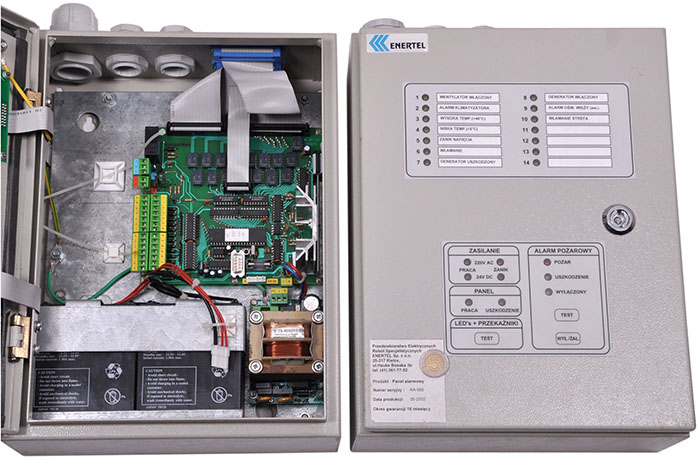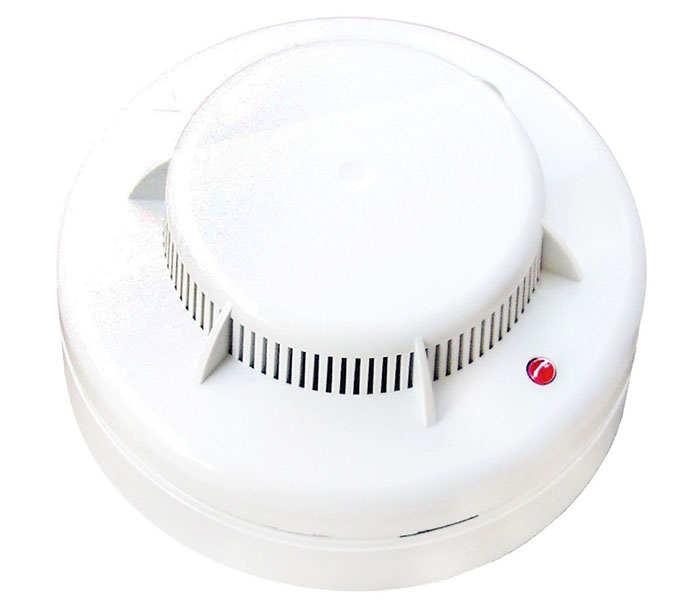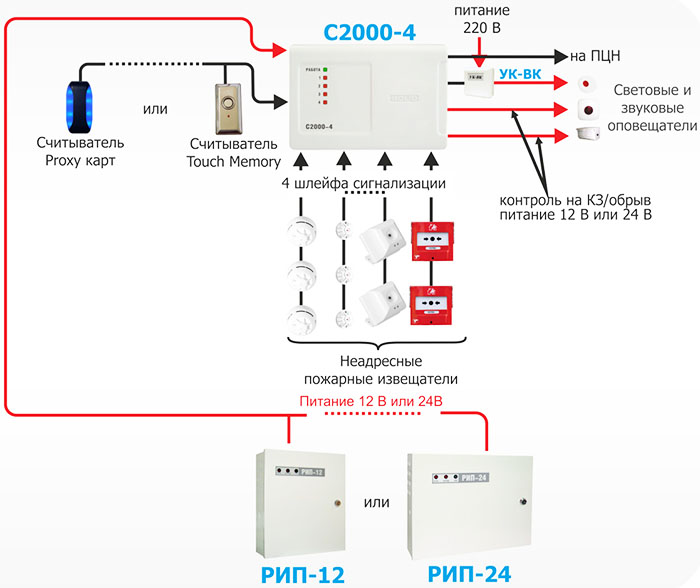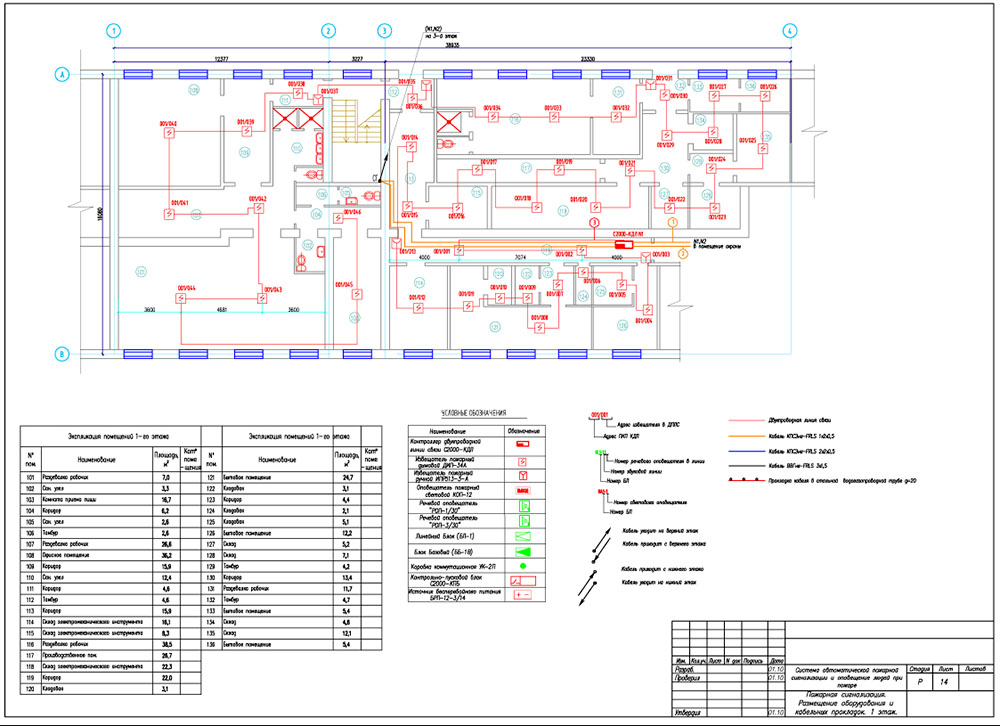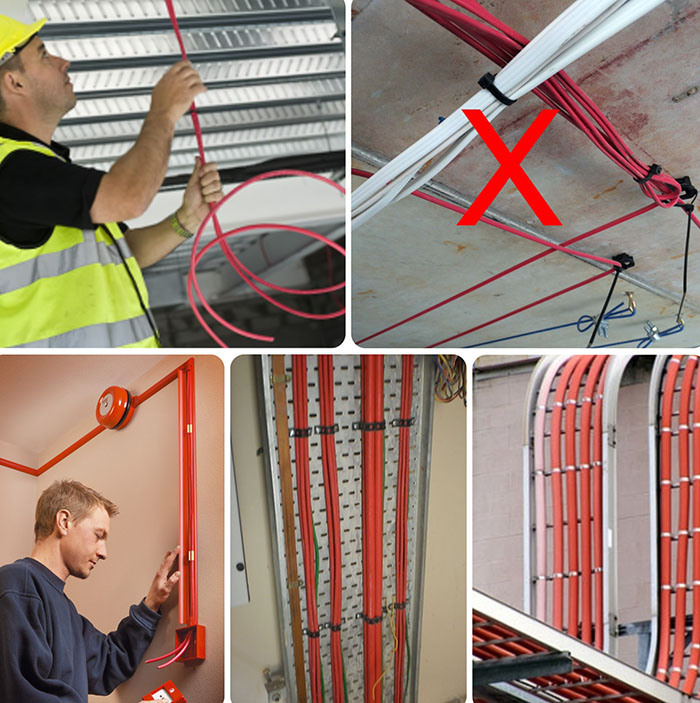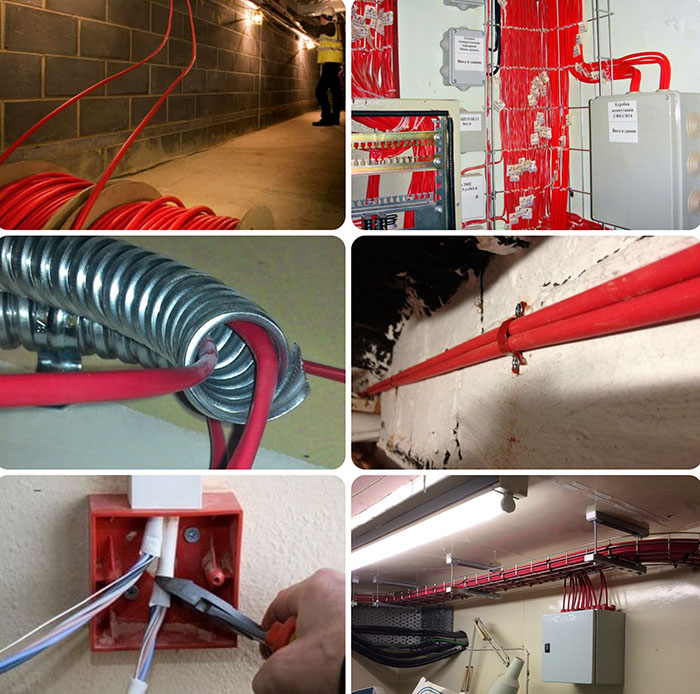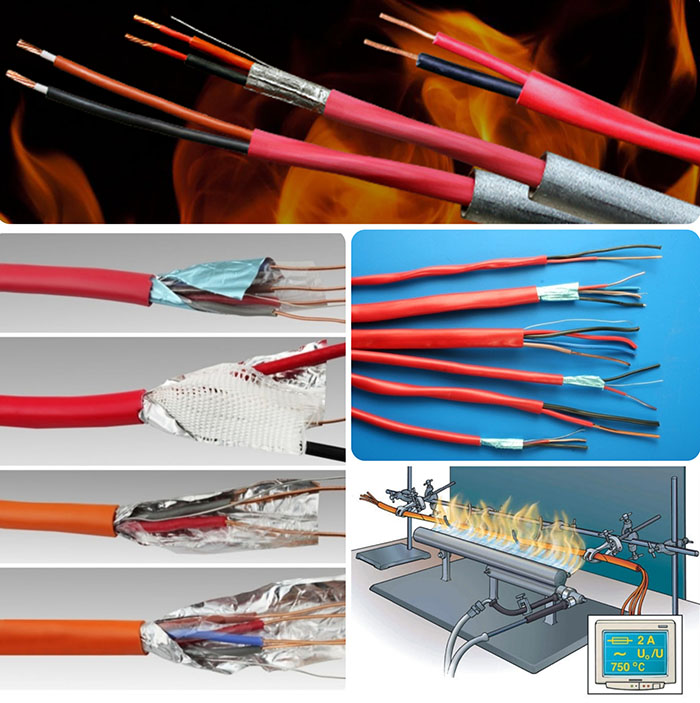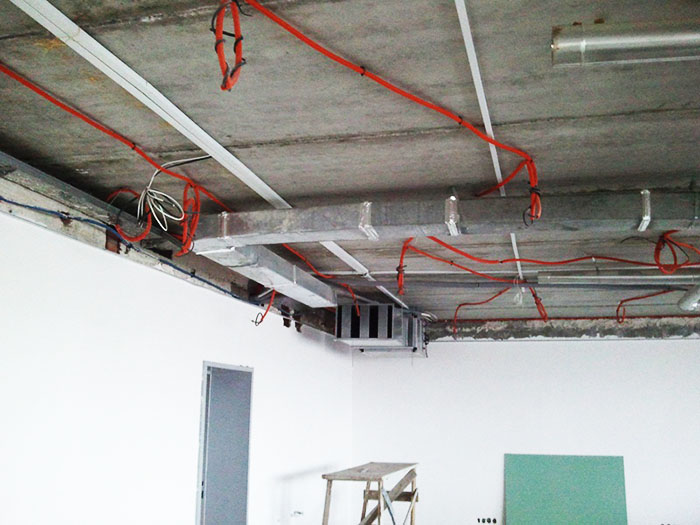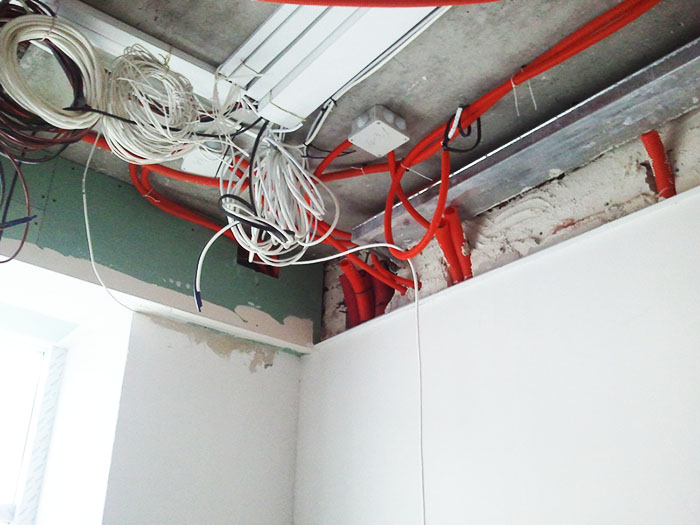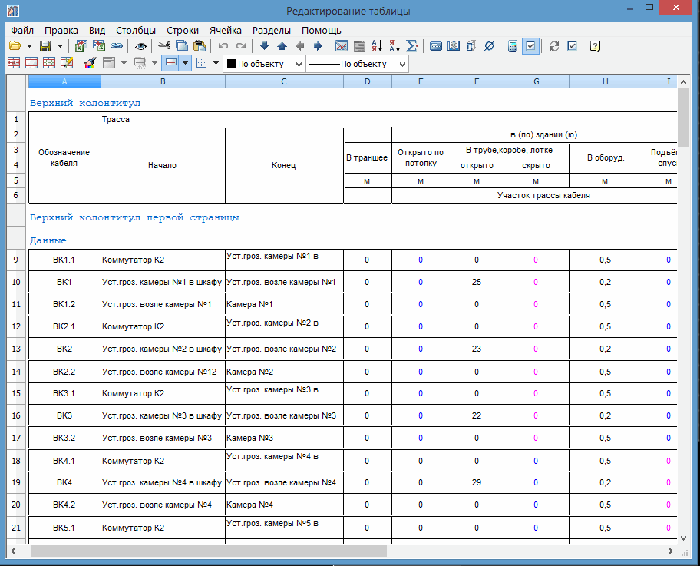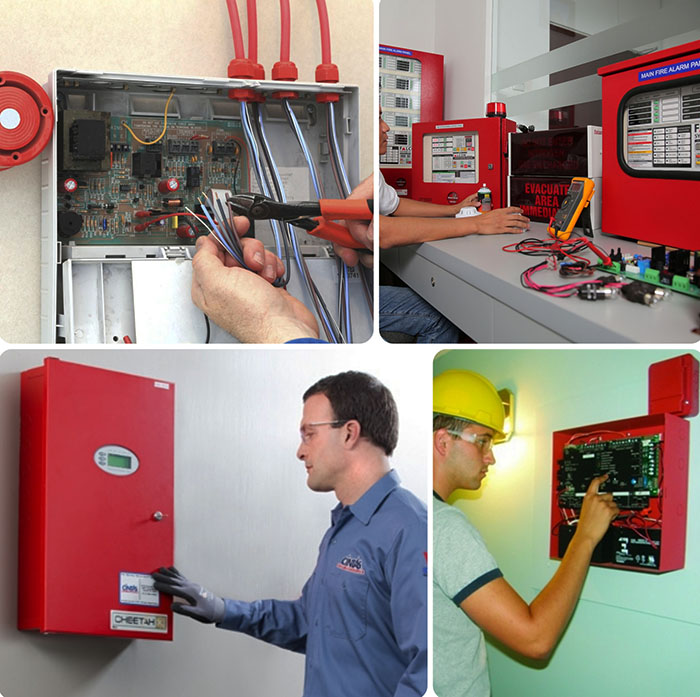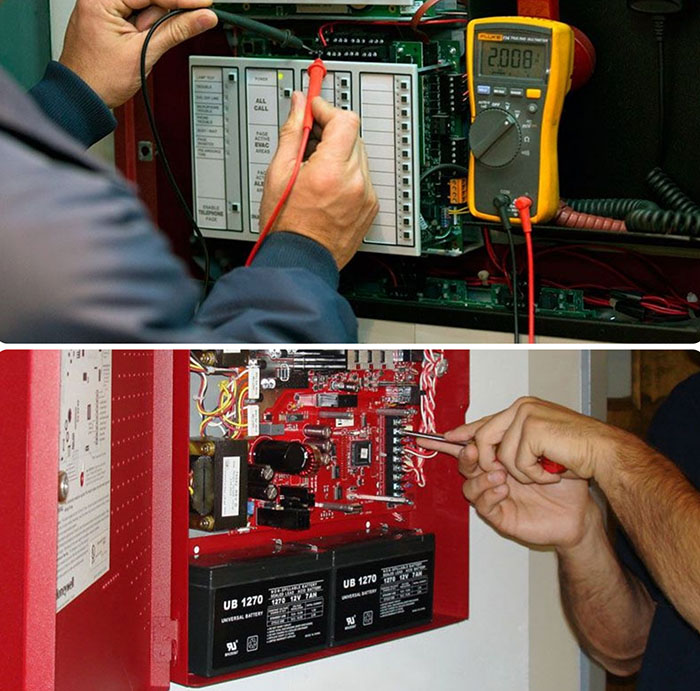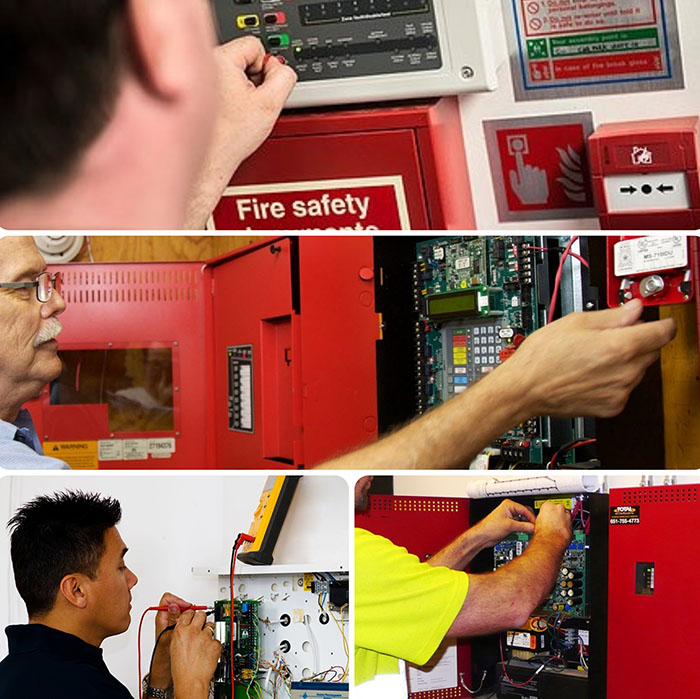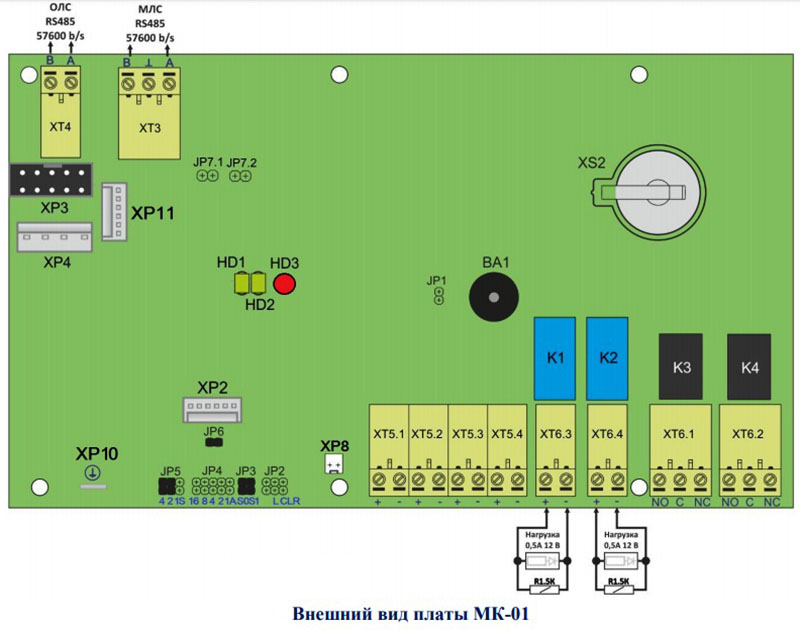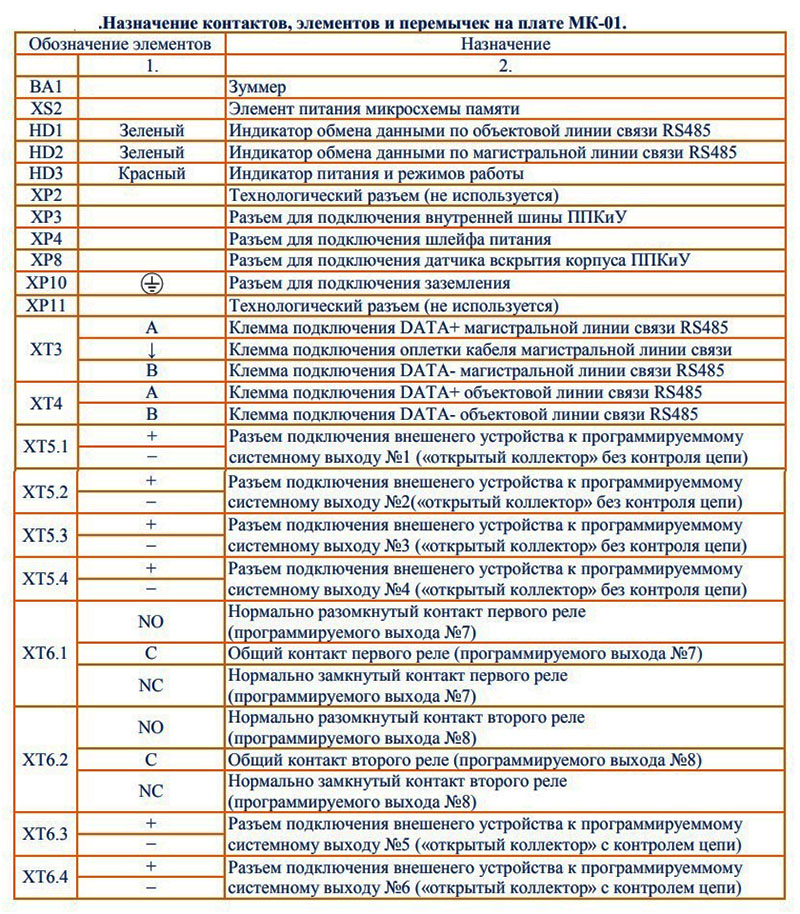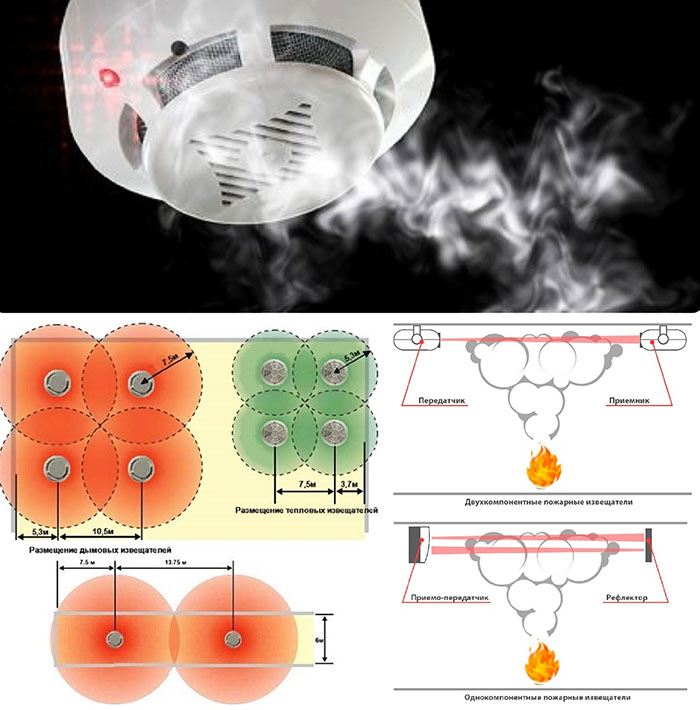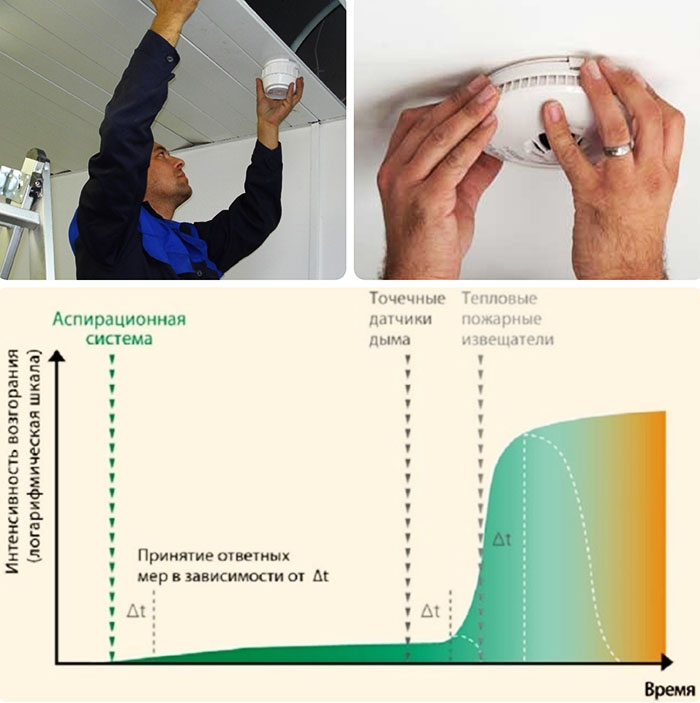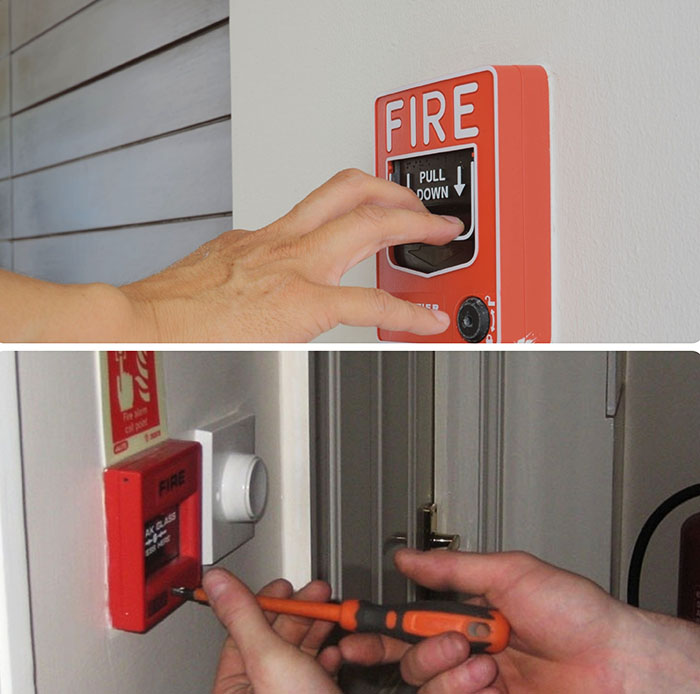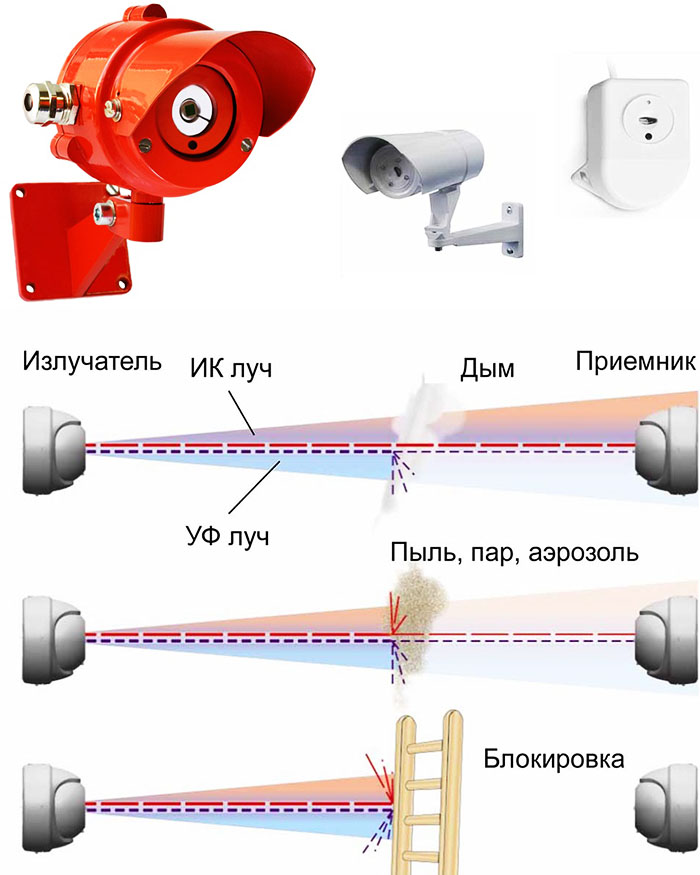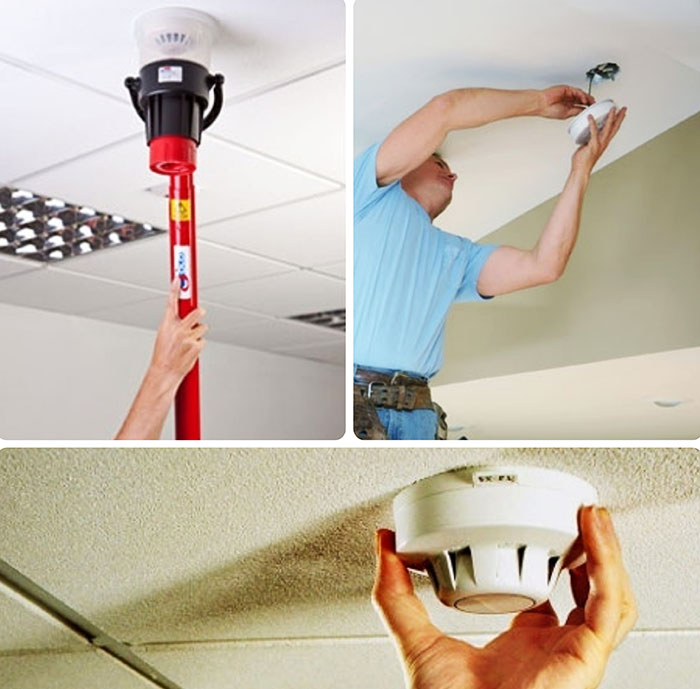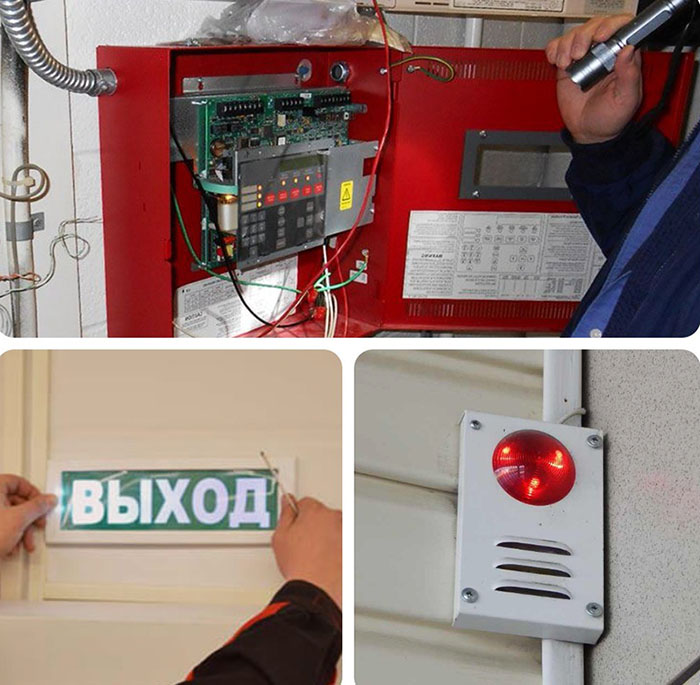Fire alarm installation: standards, system composition and basic installation rules
Technical Regulations ФЗ №123 (Art. 83) defines a list of objects requiring mandatory automatic fire alarm (APS) as an independent element or AUPT (automatic fire extinguishing installations). Of the most important, all objects related to healthcare, education (especially for children), office and commercial (financial) premises should be mentioned. Also, the installation of a fire alarm is mandatory for any service and entertainment facilities where there are a large number of visitors.
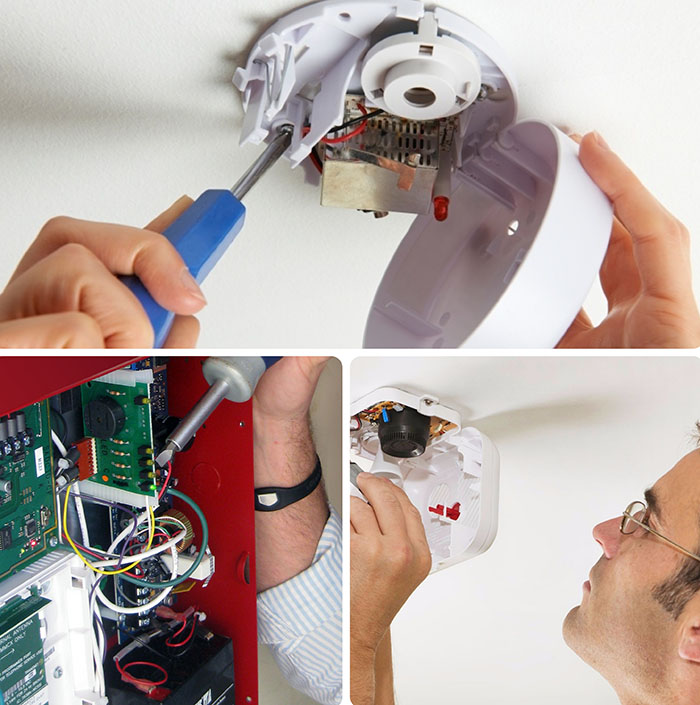
Fire alarm installation requires the involvement of highly qualified specialists
PHOTO: montage-ssb.ru
The article will provide a list of key regulations in accordance with which all work related to the APS is carried out. An introductory overview of the elements and structure is given, and the basic installation requirements are listed.
The content of the article
Design and installation guidelines
It is important to take into account that all activities related to the design, installation and maintenance of fire alarms must be carried out by organizations that have the appropriate license.
Federal Law No. 123-FZ of 22.07.2008 sets out general principles and technical requirements.
The design of the APS is carried out in accordance with the following standards:
- SP 5.13130.2009 (including regulating the installation);
- GOST 28130-89;
- GOST 2.701-2008.
Installation and commissioning of equipment is carried out in accordance with:
- NPB 110-03;
- NPB 58-97;
- GOST 26342-84.
Other guiding documents:
- SP 76.13330.2016 - requirements for cable laying and technical parameters;
- RD 78.145-93 - implementation of works on the installation of APS, rules for acceptance and execution of documentation;
- RD 25.964-90 - organization and procedure for the maintenance and repair of the APS. The requirements for choosing a contractor are also spelled out here.
Important! All standards are valid as of September 01, 2019.
APS composition
The fire alarm system is a complex system that includes various devices, as well as software that carries out general control and management of equipment. APS can function independently or be part of other systems:
- AUPT - automatic fire extinguishing installations;
- SOTS - security and alarm signaling;
- ACS - access control system.
PKP
The control panel is the main APS control device. It can be both analog and digital. Performs the function of collecting information (interpreting an analog signal), transmitting data to other systems or to the dispatching console. Digital models compare the received data with threshold or discrete values stored in the memory, and independently make a decision on triggering the APS. The main parameter of the PDA is information capacity. This is the number of loops and peripheral devices that can be connected to it. In addition, digital PDAs can control the following functions of paired systems:
- SOUE (warning system and evacuation control in case of fire);
- AUPT;
- monitoring the operation of additional peripheral equipment (unlocking closed doors, stopping elevators, turning off forced ventilation, turning on the smoke exhaust system, etc.).
Types of APS
There are several types of automatic fire and combined security and fire alarms, which have significant differences in functionality.
Threshold
Installed at facilities with low and medium fire hazard levels. Threshold centralized APS is provided for residential high-rise buildings (9 floors and more). The main element is a thermal fire detector, the response temperature of which is set by the manufacturer and is unchanged.
As a rule, a threshold-type MTA has a radial topology. Up to 25-30 detectors are connected to each loop, which significantly reduces the information content.
Advantages:
- budgetary cost of equipment;
- simplicity of installation, connection and commissioning.
Disadvantages and technical limitations:
- fire is detected in the later stages of ignition;
- the peripheral equipment does not provide a self-test function;
- low information content - there is no way to find out exactly where the fire started at the facility.
Address-polling
The equipment of the address-interrogating APS differs significantly from the devices used in threshold signaling. The control panel periodically polls the peripheral devices, receiving information from them about the current state of both the monitored parameter and the equipment itself. The informational signals of the detectors, in addition to the "Fire" alarm notification, are supplemented by the signals "Norm", "Broken communication line", "Device malfunction".

Scheme of an address-interrogative APS with a ring topology of a loop based on BOLID equipment
PHOTO: pozhproekt.ru
Ring topology of loops is optimal for use in similar objects: offices, shops, classrooms in schools and clinics, etc.
Benefits:
- the operability of peripheral equipment is monitored;
- extended information content.
Among the shortcomings, it can be noted that the place of the fire source is not identified.
Important! Both in the threshold and address-interrogating APS, the function of determining the fact of fire is performed by the detector.
Analog addressable
The main difference and advantage is the transfer of the decision-making function to determine the fact of fire to the control and monitoring device. In addition to systematic interrogation of peripheral equipment, the control panel analyzes the received environmental parameters and compares them with the threshold values entered in the memory.The determination of the presence of fire is carried out on the basis of the consolidated information of various types of detectors. The number of false positives is minimized.
Fire detectors are assigned a unique identifier through which their location can be determined.
Benefits:
- fire is detected promptly in the early stages;
- scanning is carried out according to several different types of parameters;
- the exact location of the fire is determined;
- there are practically no false positives.
Disadvantages:
- the most expensive equipment of all types of APS;
- difficulties in installation and subsequent configuration.
Design
The APS calculation is carried out in accordance with the previously listed regulatory requirements in several stages. Each of them is accompanied by the creation of appropriate documentation, which must subsequently be agreed with the customer.
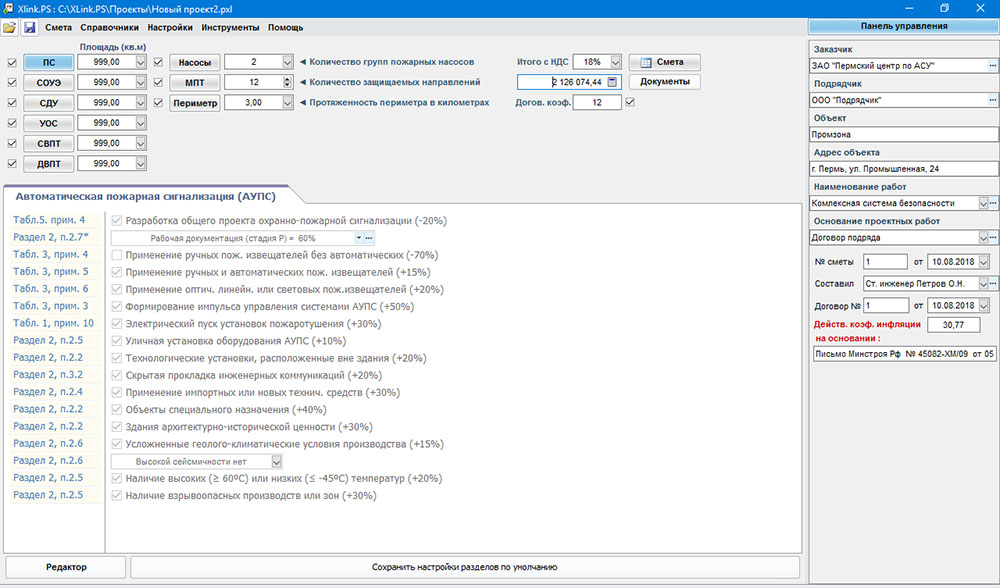
The creation of estimates is carried out using special programs containing databases for the cost of equipment and work
PHOTO: os-info.ru
Preparatory
The collection of information is carried out both from available sources (plans and schemes of the building), and as a result of a pre-design survey of the facility. The choice of the optimal structure of the APS is made. Preference is given to standard solutions, as the most effective and well-developed. If necessary, typical schemes are changed in accordance with the specifics of the object.
Preparation of terms of reference
On the basis of the collected data, together with the customer, a technical assignment (TOR) is prepared. The terms of reference, after approval by the customer, is the legal basis for starting the design process. The TK indicates:
- APS type;
- technical parameters of equipment;
- operating modes;
- ways of connecting to the engineering systems of the facility.
Development of design estimates
At this stage, the calculation of the number of devices, selection of cable products, calculation of emergency power supply devices, etc. The design documentation is divided into two sections.
- Text. The list of equipment with the specification of devices, cable logs, estimates with the cost of equipment and work performed.
- Graphic. Plan-diagram of the basic structure of the automatic fire alarm system, floor-by-floor layout of equipment, information cables, power supply, etc.
Mounting
The installation of the APS equipment is carried out in strict accordance with the requirements of the PUE, federal GOST and industry codes of practice (SP).
Cables and loops
The cables used for the loops must provide the required level of performance of the connected equipment when exposed to an open flame. The working time for each brand of cable is different, its selection depends on the requirements of fire safety standards for each specific object.
For loops, KPS cables (symmetrical fire cables) with the following marking are used:
- НГ - do not spread combustion during group laying;
- LS - low smoke emission;
- HF - halogen free;
- LTx - low toxicity;
- FR - fire resistant.
Loops and electrical cables are installed in accordance with the following standards:
- the height of the line is more than 2.2 m from the floor level, but not closer than 0.1 m from the ceiling;
- installation of low-current lines at a height of less than 2.2 m is allowed, provided they are placed in protective boxes or corrugated pipes;
- the distance from the power supply lines available at the facility is at least 0.5 m;
- if a low-current wire crosses an energy cable, then it must be protected by additional insulation - a PVC tube, 0.5 cm in each direction;
- the cables are fixed to the base using special plastic clips with a pitch of at least 250 mm horizontally and 350 mm vertically.
Cables used for loops and cable magazine:
Important! It is strictly forbidden to lay the cable for loops in the embedded grooves and niches of building structures.
PKP
The control panel and control panel (if it is a separate device) must be installed in a separate room. An exception is the control panel with an information capacity of up to 5 loops. They can be installed anywhere in the object.
The height of the device in a separate room is arbitrary, but convenient for maintenance. Outside the premises - 2.2 m. In this case, if the control panel has free access to untrained personnel or visitors, the device must be placed in a lockable cabinet.
If the control panel is located less than 1 m from heat sources or the room has a high level of dust and humidity, the switch cabinet must be made of non-combustible materials.
Features of the control panel layout, schematic diagram and pin assignment on the MK-01 diagram:
The room where the control panel is installed must have emergency lighting, which is switched on automatically. The distance from this room to the guard post or other exit should exceed 25 m.
Detectors and sirens
The number of fire detectors installed in a room depends on their functionality:
- Two-threshold devices in addressable alarm systems or unaddressed loops with a radial topology, when one loop is inserted into each controlled area. No more than three detectors, depending on the layout and structural features of the room.
- One-threshold. Installed in unaddressed APS, with ring topology. At least four detectors are required for each controlled area. In this case, they must be distributed in pairs in separate loops.
Typically, heat and smoke detectors are installed in the center of the room, on ceilings, trusses or floor beams, columns, etc. If the structure of the room includes skylights, then the detectors are installed on special suspensions fixed on stretched cables.
If the structure of ceiling slabs includes beams, trusses or other elements protruding from the floor plane by 0.4 m, then smoke detectors must be installed in a cell formed by stiffening ribs.
In the presence of relief structural elements protruding from the overlap plane by 0.08-0.4 m, the number of detectors during the calculation must be increased by 25%.
If the warehouses are equipped with racks, the upper level of which is located closer than 60 cm from the plane of the flow, then fire detectors must be installed in each formed cell.
For industrial, industrial, commercial and warehouse facilities, it is allowed to install five rooms on one loop, located at the same level and isolated from each other.
Residential and public infrastructure, as well as technical and auxiliary premises can be connected to one loop in the amount of 10 objects located on the same level.
Features of the installation of fire detectors:
Summing up
It should be noted that, despite the apparent lightness, the installation of even the simplest fire alarm systems should be carried out by professionals from organizations that have the appropriate license. Self-assembly, even if done correctly, will require additional verification by the regulatory authorities, which, in the end, can lead to penalties.
If the information provided in the article turned out to be useful, share the link with your friends and take part in the discussion.



